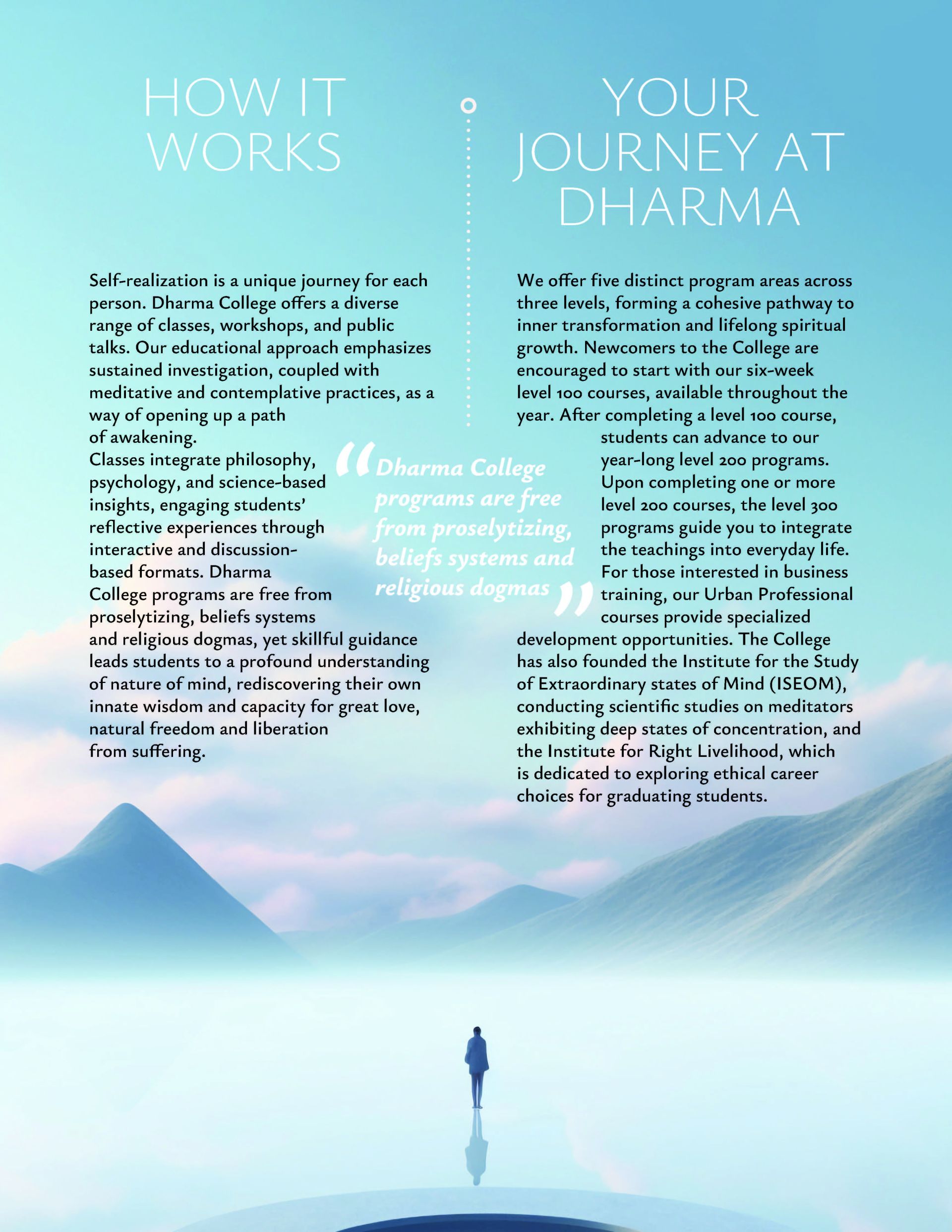Anxiety is a common and often debilitating condition that affects millions of people worldwide. At Dharma College, we believe that mindfulness techniques can be powerful tools in managing and reducing anxiety. Our courses and programs are designed to help you integrate mindfulness into your daily life, allowing you to find peace and calm amidst the chaos.
Take this course: Balance, Health Care and Healing Power of Ease
Understanding Anxiety
Anxiety is a natural response to stress, characterized by feelings of worry, nervousness, or fear. While it’s normal to experience anxiety occasionally, chronic anxiety can interfere with your daily life and overall well-being. Common symptoms include restlessness, fatigue, difficulty concentrating, and physical symptoms like increased heart rate and muscle tension.
The Power of Mindfulness
Mindfulness involves paying attention to the present moment without judgment. By focusing on the here and now, mindfulness can help reduce anxiety by preventing your mind from dwelling on past regrets or future worries. Regular practice of mindfulness can lead to improved mental clarity, emotional stability, and overall well-being.
Effective Mindfulness Techniques for Anxiety
1. Mindful Breathing
Mindful breathing is a simple yet powerful technique that involves focusing your attention on your breath. By doing so, you can calm your mind and reduce anxiety. Here’s how to practice mindful breathing:
- Find a comfortable position and close your eyes.
- Take a deep breath in through your nose, allowing your abdomen to expand.
- Exhale slowly through your mouth.
- Focus on the sensation of your breath entering and leaving your body.
- If your mind starts to wander, gently bring your focus back to your breath.
2. Body Scan Meditation
Body scan meditation involves bringing awareness to different parts of your body, noticing any sensations, tension, or discomfort. This practice can help you connect with your body and release physical tension associated with anxiety.
- Lie down or sit in a comfortable position.
- Close your eyes and take a few deep breaths.
- Starting from the top of your head, slowly move your attention down to your toes, noticing any sensations along the way.
- If you encounter areas of tension, try to breathe into them and release the tension as you exhale.
3. Mindful Observation
Mindful observation involves paying close attention to your surroundings without judgment. This practice can help ground you in the present moment and reduce anxious thoughts.
- Choose an object in your environment, such as a flower or a candle flame.
- Focus all your attention on this object, noticing its color, texture, shape, and any other details.
- Allow yourself to be fully present with the object, letting go of any distracting thoughts.
4. Loving-Kindness Meditation
Loving-kindness meditation involves cultivating feelings of compassion and love towards yourself and others. This practice can help reduce anxiety by promoting positive emotions and reducing feelings of isolation.
- Sit in a comfortable position and close your eyes.
- Take a few deep breaths and focus on your heart center.
- Silently repeat phrases such as “May I be happy, may I be healthy, may I be safe, may I live with ease.”
- Gradually extend these wishes to others, including loved ones, acquaintances, and even those you find challenging.
Join Us at Dharma College
Embracing mindfulness can transform your relationship with anxiety,
leading to a calmer and more balanced life. At Dharma College, we are committed
to supporting you on your mindfulness journey. Our courses and community
provide the perfect environment to cultivate these essential practices.
Discover the transformative power of mindfulness with us. Visit our website to learn more about our courses and enroll today. Your journey to a more peaceful and anxiety-free life begins here.
References
- Baer, Ruth A. Mindfulness-Based Treatment Approaches: Clinician's Guide to Evidence Base and Applications. Elsevier, 2006.
- Brach, Tara. Radical Acceptance: Embracing Your Life with the Heart of a Buddha. Bantam, 2003.
- Davidson, Richard J., and Sharon Begley. The Emotional Life of Your Brain: How Its Unique Patterns Affect the Way You Think, Feel, and Live – and How You Can Change Them. Plume, 2013.
- Hanh, Thich Nhat. The Miracle of Mindfulness: An Introduction to the Practice of Meditation. Beacon Press, 1999.
- Kabat-Zinn, Jon. Full Catastrophe Living: Using the Wisdom of Your Body and Mind to Face Stress, Pain, and Illness. Delta, 1990.
- Kornfield, Jack. A Path with Heart: A Guide Through the Perils and Promises of Spiritual Life. Bantam, 1993.
- McGonigal, Kelly. The Willpower Instinct: How Self-Control Works, Why It Matters, and What You Can Do to Get More of It. Avery, 2011.
- Segal, Zindel V., et al. Mindfulness-Based Cognitive Therapy for Depression. Guilford Press, 2013.
- Siegel, Daniel J. The Mindful Brain: Reflection and Attunement in the Cultivation of Well-Being. W.W. Norton & Company, 2007.
- Williams, Mark, and Danny Penman. Mindfulness: An Eight-Week Plan for Finding Peace in a Frantic World. Rodale Books, 2011.






Copyright © 2024 Dharma College, All rights reserved.
Dharma College is an experiential academy for investigating the inner depths of mind and opening to an innate understanding of the treasures and freedom of Being.
This email was sent to <<Email Address>
Want to change how you receive these emails?
You can update your preferences or unsubscribe from this list.

Contact
(510) 704-1105

